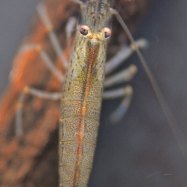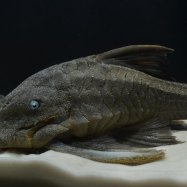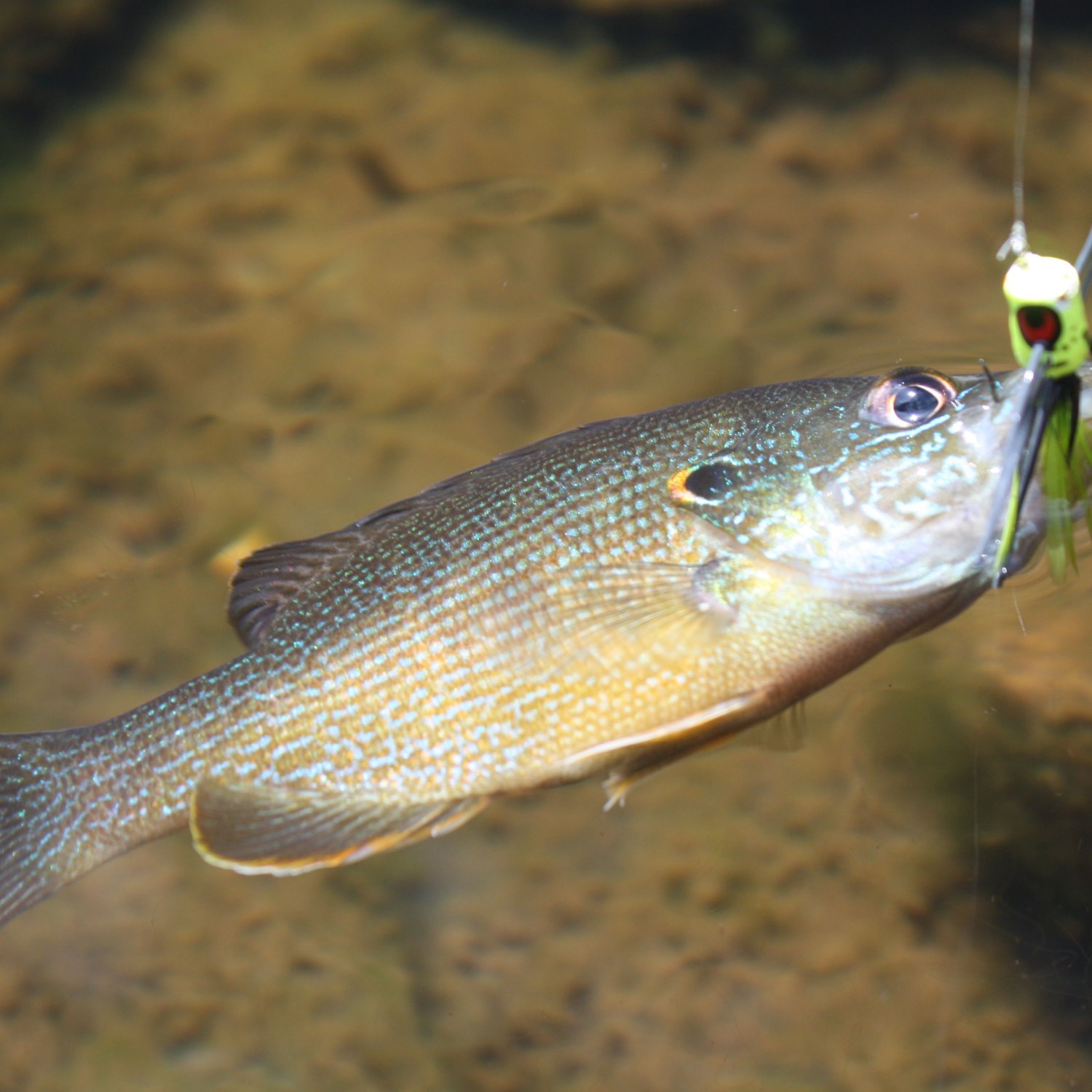
Green Sunfish
Up to 12 inches (30 cm)
Green Sunfish (Category: Animals G) can grow up to 12 inches in length and can be found in lakes, ponds, rivers, and reservoirs. They belong to the family Centrarchidae and have a compressed and elongated body shape. These colorful fish are popular among anglers and are known for their feisty nature. Catch and release is recommended to maintain healthy populations. #greensunfish #freshwaterfishing #anglers #centrarchidae
Animal Details Summary:
Common Name: Green Sunfish
Kingdom: Animalia
Habitat: Freshwater
The Unique and Fascinating Green Sunfish: A Hidden Gem in North America's Freshwaters
Deep within the freshwater bodies of North America lies a precious and often overlooked species - the Green Sunfish (Lepomis cyanellus). While not as flashy or well-known as its close relatives, such as the Largemouth Bass or Bluegill, the Green Sunfish is a remarkable and fascinating creature. In this article, we will delve into the exciting world of the Green Sunfish and discover why it deserves recognition and appreciation.What is a Green Sunfish?
The Green Sunfish, also known by its scientific name Lepomis cyanellus, is a species of freshwater fish belonging to the Centrarchidae family Green Sunfish. It is found in North America, specifically in the United States, and can be seen in lakes, ponds, rivers, and reservoirs. Not to be confused with the Pumpkinseed Sunfish, which is also green in color, the Green Sunfish boasts a unique and distinctive appearance that sets it apart from other fishes.A Colorful and Elusive Beauty
One of the main distinguishing features of the Green Sunfish is its striking coloration. As its name suggests, the Green Sunfish is predominantly green in color, with a bluish hue that adds to its allure. Its back and sides are usually an olive-green shade, while its belly is yellow with a hint of green. This vibrant coloration serves as a natural camouflage that helps the Green Sunfish blend into its surroundings, making it difficult for predators to spot.However, the Green Sunfish's colors are not limited to green and yellow. During the breeding season, male Green Sunfishes develop a bright orange-red belly and fins, making them even more eye-catching. This visual display is a way for them to attract females and assert their dominance among other males Gigantopithecus.
A Unique Body Shape
Apart from its vibrant coloration, the Green Sunfish also has an unusual body shape that sets it apart from other fishes in its family. Its body is compressed and elongated, giving it a more oval-shaped appearance compared to the rounder and more compact bodies of other sunfish species. This unique body shape allows the Green Sunfish to be more streamlined and agile, making it a swift and efficient swimmer.A Carnivorous Diet
As a carnivorous species, the Green Sunfish has a varied diet that mainly consists of insects, crustaceans, worms, and small fish. With its small mouth and sharp teeth, it is well-equipped to hunt and consume its prey. Interestingly, the Green Sunfish also has a preference for bottom-dwelling organisms, and it uses its flattened and pointed head to dig through the substrate to find food.A Habitat in North America
The Green Sunfish is a native species of North America, and it can be found in various bodies of freshwater across the continent. However, it is most commonly found in the central and southeastern regions of the United States, particularly in states such as Texas, Oklahoma, and Louisiana. The Green Sunfish thrives in freshwater habitats with dense vegetation and a rocky bottom, where it can find protection and an abundance of food.Why the Green Sunfish is a Hidden Gem
Despite its unique appearance and interesting characteristics, the Green Sunfish is often overlooked and overshadowed by its more well-known and popular relatives, such as the Largemouth Bass and Bluegill. As with many other less flashy species, the Green Sunfish does not receive the same level of attention and appreciation that it deserves.However, the Green Sunfish is a vital part of North America's freshwater ecosystems and plays an essential role in maintaining a balanced food chain. Its diet mainly consists of insects and other small organisms, making it a crucial predator that keeps populations of these creatures in check. Additionally, the Green Sunfish is also an important prey species for larger fish, birds, and mammals.
Conservation Efforts
Despite being a common species, there is a lack of detailed information and research on the Green Sunfish. As a result, its population and habitat are vulnerable to human activities, such as water pollution and habitat destruction. However, there have been efforts to protect and conserve this species.In some states, fishing regulations have been put in place to limit the number of Green Sunfish caught and ensure their sustainability. Additionally, conservation efforts have focused on educating the public about the importance of this species and their role in the ecosystem. Through awareness and proper management practices, it is hoped that the Green Sunfish population will continue to thrive in North American waters.
The Green Sunfish in Captivity
Due to its unique appearance and interesting behavior, the Green Sunfish has become a popular choice for home aquariums. However, it is essential to note that the Green Sunfish can grow quite large, reaching up to 12 inches (30 cm) in length. Therefore, proper research and preparation are necessary before introducing this species into a home aquarium. They require a spacious tank with plenty of hiding places, as well as a proper diet to thrive.The Green Sunfish: A Hidden Jewel Awaiting Discovery
The Green Sunfish is a prime example of a hidden gem that is often overlooked and underappreciated. Its unique coloration, body shape, and behavior make it a truly fascinating creature that deserves recognition and admiration. As a vital part of North America's freshwater ecosystems, it is crucial that we continue to educate ourselves about this species and make efforts to protect and conserve its population for generations to come. So the next time you come across a Green Sunfish in its natural habitat, take a moment to appreciate its beauty and value in our ecosystem.

Green Sunfish
Animal Details Green Sunfish - Scientific Name: Lepomis cyanellus
- Category: Animals G
- Scientific Name: Lepomis cyanellus
- Common Name: Green Sunfish
- Kingdom: Animalia
- Phylum: Chordata
- Class: Actinopterygii
- Order: Perciformes
- Family: Centrarchidae
- Habitat: Freshwater
- Feeding Method: Carnivorous
- Geographical Distribution: North America
- Country of Origin: United States
- Location: Lakes, ponds, rivers, and reservoirs
- Animal Coloration: Green with a bluish hue
- Body Shape: Compressed and elongated
- Length: Up to 12 inches (30 cm)

Green Sunfish
- Adult Size: 6-12 inches (15-30 cm)
- Average Lifespan: 3-6 years
- Reproduction: Oviparous
- Reproductive Behavior: Build nests and guard eggs
- Sound or Call: Not known for specific sounds or calls
- Migration Pattern: Non-migratory
- Social Groups: Solitary
- Behavior: Aggressive and territorial
- Threats: Habitat loss, pollution, overfishing
- Conservation Status: Least Concern
- Impact on Ecosystem: Important for maintaining balanced fish populations
- Human Use: Recreational fishing
- Distinctive Features: Dark spot at the base of the dorsal fin
- Interesting Facts: Can hybridize with other sunfish species
- Predator: Larger fish, birds, and mammals
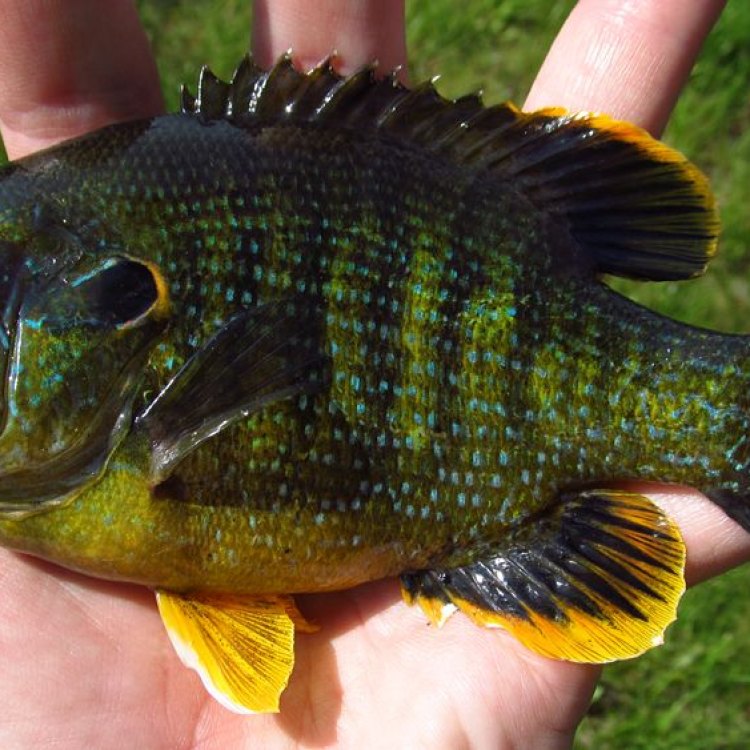
Lepomis cyanellus
The Green Sunfish: A Feisty Fighter in Freshwater
When thinking of fish, most people envision a diverse array of colorful creatures dwelling in the depths of the ocean. However, there is a lesser-known and equally fascinating species that resides in freshwater bodies across North America: the Green Sunfish.The Green Sunfish (Lepomis cyanellus) is a small but mighty member of the sunfish family, which also includes popular sportfish such as the Largemouth Bass and Bluegill. In this article, we will delve into the unique features and behaviors of this fish, and explore its role in freshwater ecosystems PeaceOfAnimals.Com.
Distinctive Features
Measuring in at 6-12 inches (15-30 cm) as adults, the Green Sunfish is a compact fish with an elongated body and a round head. Its coloration can vary from olive green to brown, with a mottled pattern on the sides and a pale yellow or white belly. However, what sets this fish apart is the distinctive dark spot at the base of its dorsal fin. This is a key identifying feature, as no other sunfish species has this spot.Behavior and Reproduction
Green Sunfish are solitary creatures, usually found hiding among aquatic vegetation or near the bottom of a body of water. They are not known for making any specific sounds or calls, but they are highly active and can be aggressive in nature.During the breeding season, which typically spans from May to August, male Green Sunfish will build nests in shallow waters. These nests are circular depressions constructed by fanning their fins on the bottom of the waterbed. The males will then entice females to lay their eggs in the nests, which they will protect and guard until hatching Green Bottle Blue Tarantula. This reproductive behavior is known as oviparous, meaning the eggs develop and hatch outside of the mother's body.
Fun Fact: Hybridization
One interesting fact about Green Sunfish is their ability to hybridize with other sunfish species. This can occur when a male Green Sunfish mates with a female of another sunfish species in the same genus, such as the Bluegill or Redear Sunfish. The resulting offspring can display a mix of traits from both species, making hybrid sunfish a sought-after catch for anglers.Lifespan and Threats
The average lifespan of a Green Sunfish is 3-6 years, with some individuals living up to 8 years in captivity. In the wild, their lifespan may be shorter due to various threats they face. These threats primarily include habitat loss, pollution, and overfishing.Due to their small size, Green Sunfish are often preyed upon by larger fish, birds, and mammals. Their aggressive and territorial nature can also lead to injury or death when fighting over nesting sites or food. However, the biggest threat to their population is human activity, such as the construction of dams and pollution from agricultural runoff.
Importance in Ecosystems
Despite being considered a small and unassuming fish, Green Sunfish play a significant role in freshwater ecosystems. As predators, they help control the populations of smaller fish, invertebrates, and insect larvae. This, in turn, contributes to the maintenance of a balanced ecosystem.Furthermore, Green Sunfish are an important food source for larger fish, birds, and mammals. Their presence in a waterbody indicates a healthy and diverse fish population, which is crucial for overall ecosystem health.
Human Use: Recreational Fishing
In addition to their ecological importance, Green Sunfish also have value in the recreational fishing industry. Due to their aggressive nature and willingness to take bait, they are an exciting catch for anglers looking for a challenging fight. Their small size also makes them ideal for pan-frying, making them a popular target for fishermen.However, it is important to note that strict fishing regulations are necessary to ensure the sustainable harvest of Green Sunfish. Overfishing can quickly deplete their populations and pose a threat to their survival.
Conservation Status
According to the International Union for Conservation of Nature (IUCN), the Green Sunfish is currently listed as Least Concern. This means that while some populations may be declining in certain areas, it is not at a level that warrants a higher conservation status.However, it is still crucial to protect their habitats and manage fishing to ensure the sustainability of this species. Collaborative efforts between government agencies, conservation organizations, and recreational anglers can help maintain healthy populations of Green Sunfish and other freshwater fish species.
In Conclusion
The Green Sunfish may not be the most well-known fish species, but it is undoubtedly one worth learning more about. From its unique features to its important role in freshwater ecosystems, this feisty fish has much to offer.While facing a handful of threats, the Green Sunfish continues to thrive in various bodies of water across North America. As responsible humans, it is essential to recognize and appreciate the value of this species and take steps to protect it for future generations to enjoy. So, the next time you come across a small, dark-spotted sunfish, you'll know just how special it truly is.
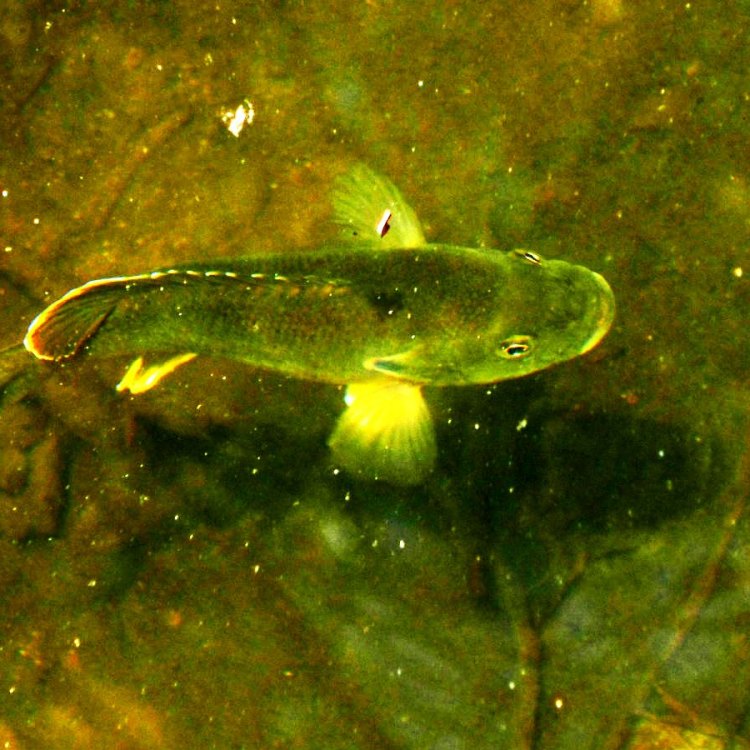
The Unique and Fascinating Green Sunfish: A Hidden Gem in North America's Freshwaters
Disclaimer: The content provided is for informational purposes only. We cannot guarantee the accuracy of the information on this page 100%. All information provided here may change without prior notice.



